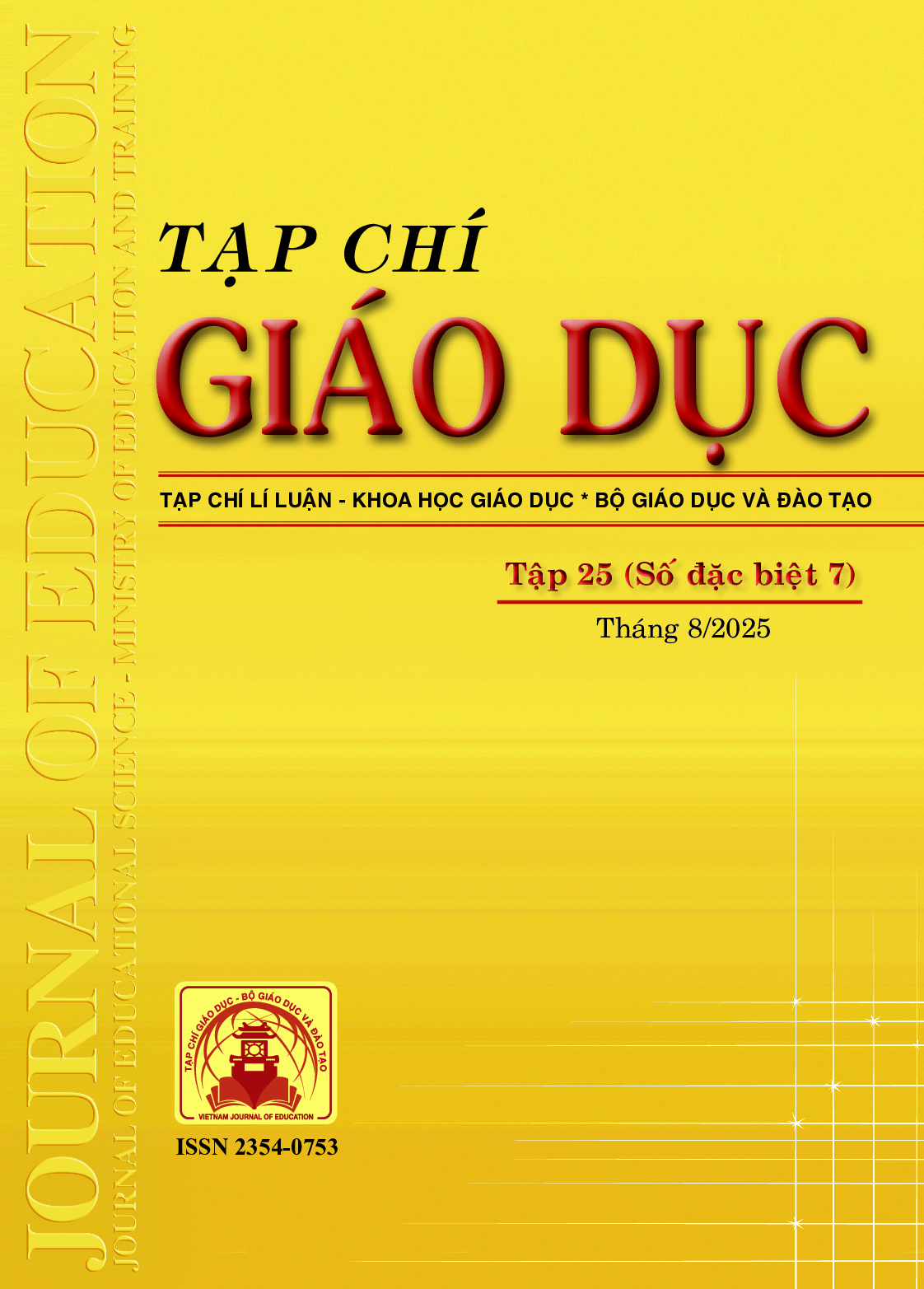Dạy học nội dung “Phân số” (Toán 4) theo định hướng tích hợp STEM
Tóm tắt
Integrated Education and STEM (Science, Technology, Engineering, and Mathematics) are increasingly asserting their pivotal role in innovating primary education, particularly in fostering students’ problem-solving competencies. However, teachers often encounter difficulties in designing lessons aligned with this approach for specific topics, such as the “Fractions” unit in Grade 4 Mathematics. This article aims to propose a process and guidelines for designing STEM-integrated lessons for teaching the “Fractions” content in Grade 4 Mathematics, based on theoretical analysis and practical experience drawn from the design and implementation of the STEM project plan “The Wise Urban Planner” as a case study. The key outcome of the study is a five-step process accompanied by specific guidelines, illustrated through an analysis of the sample project’s development, thereby providing a useful reference framework for teachers, contributing to the enhancement of teaching effectiveness for the Fractions content, and promoting STEM education in primary schools.
Tài liệu tham khảo
Behr, M. J., Lesh, R., Post, T. R., & Silver, E. A. (1983). Rational number concepts. Acquisition of mathematics concepts and processes, 91-125.
Bộ GD-ĐT (2018a). Chương trình giáo dục phổ thông - Chương trình tổng thể (ban hành kèm theo Thông tư số 32/2018/TT-BGDĐT ngày 26/12/2018 của Bộ trưởng Bộ GD-ĐT).
Bộ GD-ĐT (2018b). Chương trình giáo dục phổ thông môn Toán (ban hành kèm theo Thông tư số 32/2018/TT-BGDĐT ngày 26/12/2018 của Bộ trưởng Bộ GD-ĐT).
Bybee, R. W., Taylor, J. A., Gardner, A., Van Scotter, P., Powell, J. C., Westbrook, A., & Landes, N. (2006). The BSCS 5E instructional model: Origins and effectiveness. Colorado Springs, Co: BSCS, 5(88-98).
English, L. D., & Lehmann, T. (Eds.). (2024). Ways of thinking in STEM-based problem solving: Teaching and learning in a new era. Routledge. [https://doi.org/10.4324/9781003404989](https://doi.org/10.4324/9781003404989)
Hoa Ánh Tường, Phạm Sỹ Nam (2024). Tổ chức dạy học STEM chủ đề “Các hình khối trong thực tiễn” (Toán 7). Tạp chí Giáo dục, 24(1), 13-18.
Honey, M., Pearson, G., & Schweingruber, H. (2014). STEM integration in K-12 education: Status, prospects, and an agenda for research. National Academies Press. [https://doi.org/https://doi.org/10.17226/18612](https://doi.org/https://doi.org/10.17226/18612)
Kelley, T. R., & Knowles, J. G. (2016). A conceptual framework for integrated STEM education. International Journal of STEM Education, 3(1), 11. [https://doi.org/10.1186/s40594-016-0046-z](https://doi.org/10.1186/s40594-016-0046-z)
Lê Xuân Quang (2017). Dạy học môn Công nghệ phổ thông theo định hướng giáo dục STEM. Luận án tiến sĩ Khoa học Giáo dục, Trường Đại học Sư phạm Hà Nội.
Margot, K. C., & Kettler, T. (2019). Teachers’ perception of STEM integration and education: a systematic literature review. International Journal of STEM Education, 6(1), 1-16.
Nadelson, L. S., & Seifert, A. L. (2017). Integrated STEM defined: Contexts, challenges, and the future. The Journal of Educational Research, 110(3), 221-223. [https://doi.org/10.1080/00220671.2017.1289775](https://doi.org/10.1080/00220671.2017.1289775)
Shernoff, D. J., Sinha, S., Bressler, D. M., & Ginsburg, L. (2017). Assessing teacher education and professional development needs for the implementation of integrated approaches to STEM education. International Journal of STEM Education, 4(1), 13.
Smith, J. P., III. (2002). The development of students’ knowledge of fractions and ratios. In Making sense of fractions, ratios, and proportions (pp. 3-17). National Council of Teachers of Mathematics.
Verschaffel, L., Greer, B., & De Corte, E. (2000). Making Sense of Word Problems. Netherlands: Swets & Zeitlinger.
Đã Xuất bản
Cách trích dẫn
Số
Chuyên mục
Giấy phép

Tác phẩm này được cấp phép theo Ghi nhận tác giả của Creative Commons Giấy phép quốc tế 4.0 .












